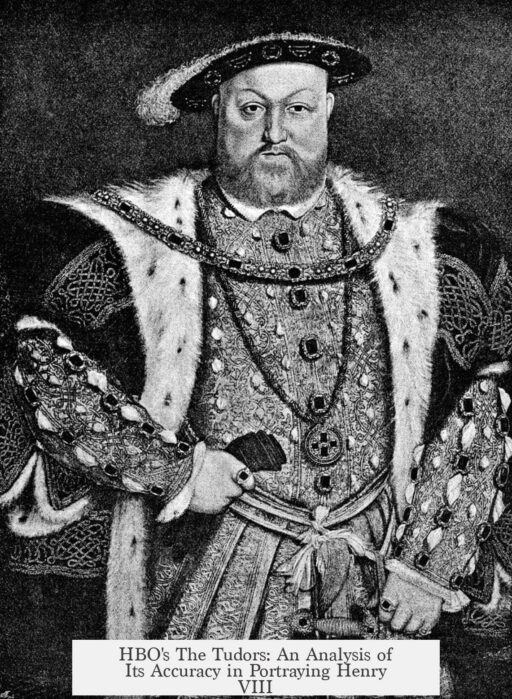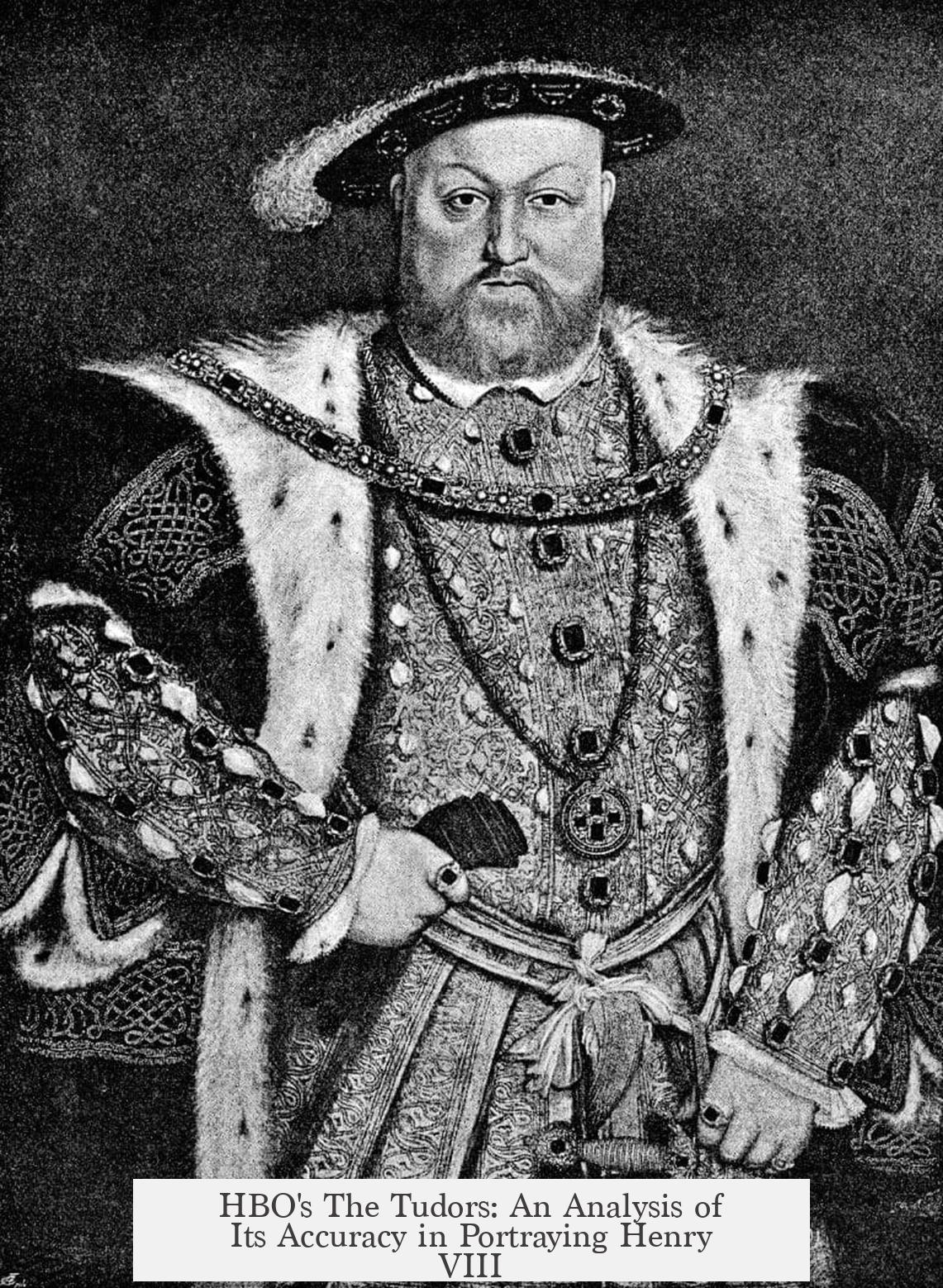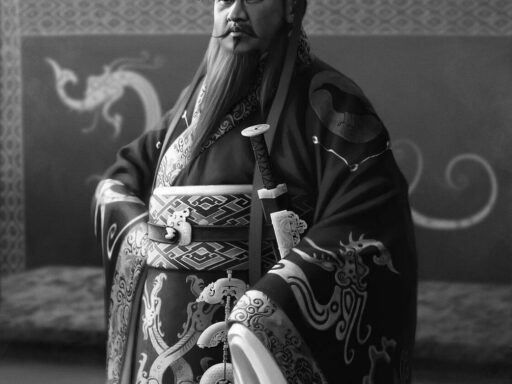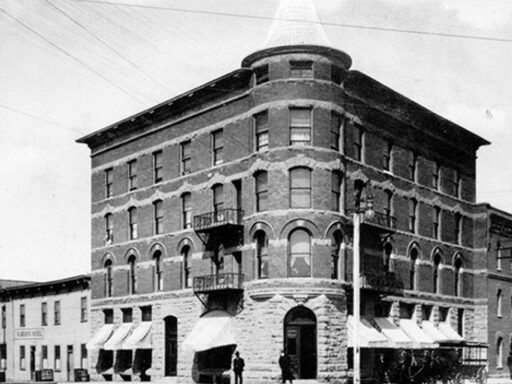HBO’s “The Tudors” presents a dramatized but partly accurate portrayal of Henry VIII, blending historical truth with creative liberties. The series captures pivotal events and figures from Henry’s reign with moderate accuracy but distorts key details about his personality, relationships, and family to enhance entertainment.
The show gets much right historically but takes clear liberties. It compresses timelines and merges characters, notably combining Henry VIII’s two sisters, Mary and Margaret, into a single figure. This erasure neglects their distinct historical roles. Margaret, who married the Scottish king, and Mary, who married the French king and later Charles Brandon, had offspring who influenced European history. The series’ choice to blend them into one character confuses genuine family dynamics and political alliances.
Henry VIII’s personality in the series leans heavily towards exaggeration. The show’s Henry is frequently portrayed as highly lustful, whereas historical records suggest he did not have numerous mistresses, contrasting with popular legend. The dramatization makes him seem more sexually driven than documented. In his youth, Henry was regarded as a progressive and humanist monarch. The show touches on this but emphasizes his later years’ despotic tendencies linked to his health decline and marital failures.
Regarding behavior, the series shows him as volatile and at times nearly psychotic. Some historians disagree with this depiction, noting his bursts of anger may have been influenced by illness, possibly syphilis, though this remains speculative. The show hints at his intellectual side by including moments where Henry reflects on Machiavelli’s “The Prince,” but it never fully explores how these ideas shaped his reign.
Physically, the portrayal is inaccurate. The actor playing Henry is lean, whereas Henry VIII was notably stocky even in youth and became massively obese by the time he married Catherine Howard. The show downplays his declining health and physical transformation, which are relevant to understanding his mood and decision-making in later life.
Among other inaccuracies, the show depicts Cardinal Wolsey’s death as suicide. Historically, Wolsey died of illness while en route to trial. This change simplifies the narrative but distorts historical truth.
Broad context about Henry’s reign is handled fairly well. The show acknowledges his status as a second son who unexpectedly inherited a fragile dynasty following the War of the Roses, with uncertain loyalties among England’s nobility. It highlights the Protestant Reformation’s disruptive impact across Europe and Henry’s strategic political maneuvers in breaking from Catholicism. The series hints at how Henry tested his courtiers’ loyalties by challenging central Church authority and seizing church wealth to strengthen his dynasty’s position.
However, the storytelling imposes 21st-century values on a 16th-century context. Characters express modern attitudes, and Henry is framed as a spoiled brat, which simplifies the complex political and religious pressures of his time. Costuming and dialogue sometimes reflect anachronistic sensibilities rather than authentic Tudor-era culture and speech.
| Aspect | Accuracy | Notes |
|---|---|---|
| Henry VIII’s Personality | Partially accurate | Youth as progressive; later as more despotic but less crazy than portrayed |
| Henry’s Physical Appearance | Inaccurate | Actor is lean; Henry was stocky to obese |
| Henry’s Sisters | Inaccurate | Two sisters combined into one character |
| Cardinal Wolsey’s Death | Inaccurate | Died of illness, not suicide |
| Historical Context | Mostly accurate | Political and religious tensions captured well |
| Anachronisms | Present | Modern values infused in characters and storylines |
The show succeeds in making history accessible and engaging but sacrifices strict accuracy for drama. Purists may find the historical compression and character amalgamations frustrating. Yet, it reveals core truths about Henry’s reign: his quest for a male heir, his break from Rome, and the volatile atmosphere of Tudor England. These elements form a foundation that the show dramatizes and embellishes for narrative effect.
Overall, “The Tudors” offers a semi-accurate depiction of Henry VIII’s life and times. It balances education with entertainment but should be viewed with awareness of its artistic license and factual deviations.
- HBO’s “The Tudors” combines fact with fiction, creating a partly accurate portrayal of Henry VIII.
- Henry’s personality is exaggerated; his physical appearance and health decline are underplayed.
- The series merges Henry’s two sisters into a single character, obscuring historical family ties.
- Cardinal Wolsey’s death is inaccurately depicted as suicide instead of illness.
- The political and religious context of Henry’s reign is broadly correct but simplified.
- Modern values and sensibilities are imposed on the 16th-century setting.
Is HBO’s The Tudors an Accurate Portrayal of Henry VIII?
Short answer: Not really. But that’s not necessarily a bad thing. Plenty of shows take creative license. The Tudors is no exception. It mixes history with drama, romance, and some juicy embellishments. But how true is it to the real Henry VIII and his turbulent era? Let’s dive deep.
The Tudors certainly paints a *vivid* portrait of King Henry VIII. However, its accuracy swings between spot-on and head-scratchingly off. Some elements are well-researched; others, not so much. For instance, did you know Henry had two sisters, Mary and Margaret? The show combined them into a single character. Strange, right? Both sisters and their descendants significantly influenced history, yet the series blurs these distinctions, simplifying family ties for drama’s sake.
Now, let’s talk about Henry himself. How does the TV Henry stack up against the real monarch? The show depicts him as quite the lustful lad—always chasing mistresses and blinded by passion. Yet historians suggest Henry wasn’t the oversexed womanizer the show implies. In reality, he had fewer mistresses than the series suggests—though hey, TV needs spice!
Younger Henry was actually considered a progressive and humanist ruler, appreciating arts and learning. In his youth, Henry wasn’t just the blustering man-child the show hints at. The Tudors even shows him reading Machiavelli’s The Prince, hinting at a ruler aware of political gamesmanship. But it never fully explores the depth of his insights there.
As Henry aged, though, things changed. His health took a nosedive—especially that nasty ulcerated leg—and his marriages brought more misery than joy. Some historians whisper about syphilis playing a role in his increasing temper tantrums and erratic behavior, though it’s debated. The show leans into his darker moments. At times, he seems almost psychotic, which might be a stretch but serves entertainment well.
Visually, Henry Tudor’s depiction in the show diverges from reality. Jonathan Rhys Meyers, who plays him, is lean and sharp-featured. The real Henry? Even in his youth, he was stockier and more robust. By his later marriages, especially to Catherine Howard, sources describe a massively overweight and unwell king. The Tudors largely glosses over this, likely for aesthetic reasons.
How about some specific inaccuracies? Besides the merged sisters, Cardinal Wolsey’s death is portrayed dramatically, implying possible suicide. In truth, he died of illness after falling out of favor—no dramatic self-inflicted end. That’s a detail purists notice immediately.
Beyond people and events, the show sometimes injects 21st Century values into a 16th Century world. Henry appears spoiled, rebellious, and emotionally volatile in ways that echo modern celebrity scandals more than medieval monarchs. Costuming choices and plot devices aim to connect current audiences, but they blur historical context.
Speaking of context, Henry’s reign began under precarious circumstances. He wasn’t initially destined for the throne—he was the second son. The Tudor dynasty itself was relatively new, born out of the bloodshed known as the War of the Roses. Loyalties were fragile. The series romanticizes this as personal drama, but it was also brutal power politics.
Henry’s push against the Catholic Church is one of the more fascinating parts of this history. The Protestant Reformation stirred turmoil across Europe, and Henry’s break with Rome shook the continental order. Far from a mere domestic quarrel over an unwanted wife, his divorce efforts revealed and tested the loyalties of England’s nobles, exposing who truly backed the Tudor dynasty versus who preserved their own power.
So why does all this matter? Because it shows Henry as a shrewd political actor, not just an impulsive playboy. His “bull-headedness” wasn’t mere stubbornness but strategic deception, convincing enemies and allies alike of his weaknesses or obsessions while he maneuvered behind the scenes. The Tudors brushes over these nuances, favoring drama.
Besides, the show’s decision to conflate Henry’s sisters isn’t just a minor slip. Both sisters married royalty—Margaret unknowingly connected to Scotland’s throne and Mary to France’s. Their children impacted future politics significantly. Mistaking Margaret’s marriage to a Portuguese king instead of the Scottish king skips over important diplomatic history. Mixing such details shapes viewers’ understanding of Europe then and now.
The Tudors is a bit like a juicy historical novel: it mixes fact with fiction to keep viewers hooked. For a binge-worthy drama, it succeeds spectacularly. But for a fact-based understanding? It’s more of a fun starting point than a definitive biography.
So, should you trust it to learn about Henry VIII? Use it to spark interest, yes. For accurate history? Verify with solid sources. Appreciate the show’s flair but keep a historian’s skepticism handy. Consider this: isn’t it more exciting to explore the real Henry—full of contradictions, political cunning, ambition, and flawed humanity—than the smooth, soap-opera version?
In the end, The Tudors captures the broad strokes correctly—the key players, the big events, and the overall chaos of Tudor England. But it dresses up history in modern clothes, sometimes fitting them awkwardly. That’s a fair trade-off for gripping television, but don’t take all its tales as gospel.
Now, don’t let this post end without a question for you: Does historical accuracy matter more than entertainment in shows like The Tudors? Would you rather watch a dry documentary or a dramatic saga that captures the spirit more than the letter of history?
Whatever your answer, one thing is clear: Henry VIII’s life is too rich, complicated, and devastatingly human to fit neatly into any one box—be it a textbook or a TV script.




